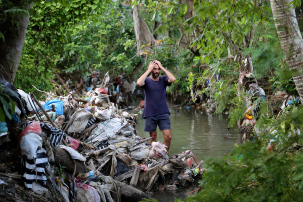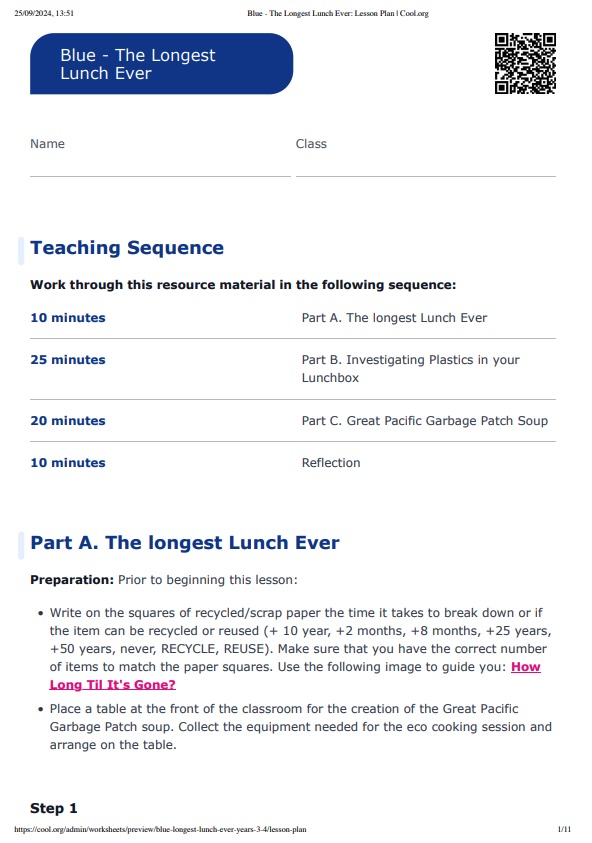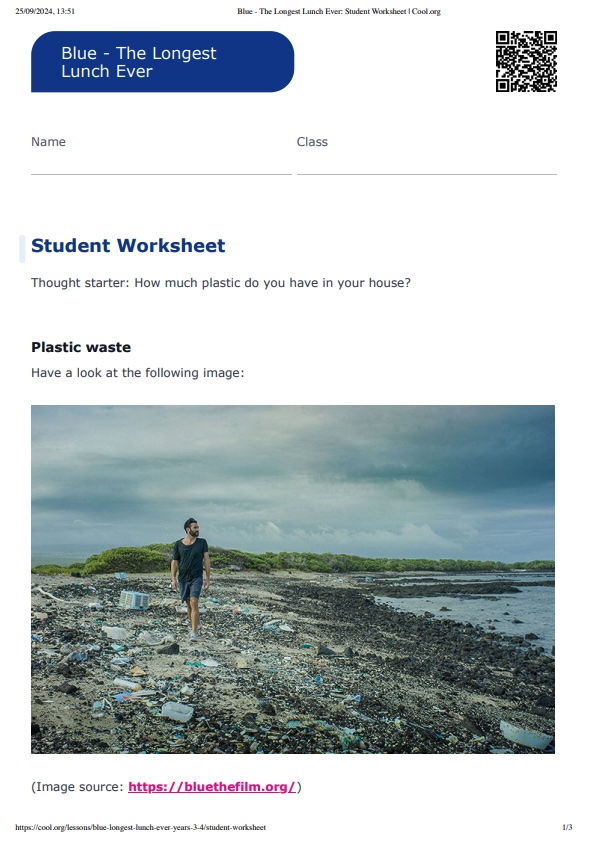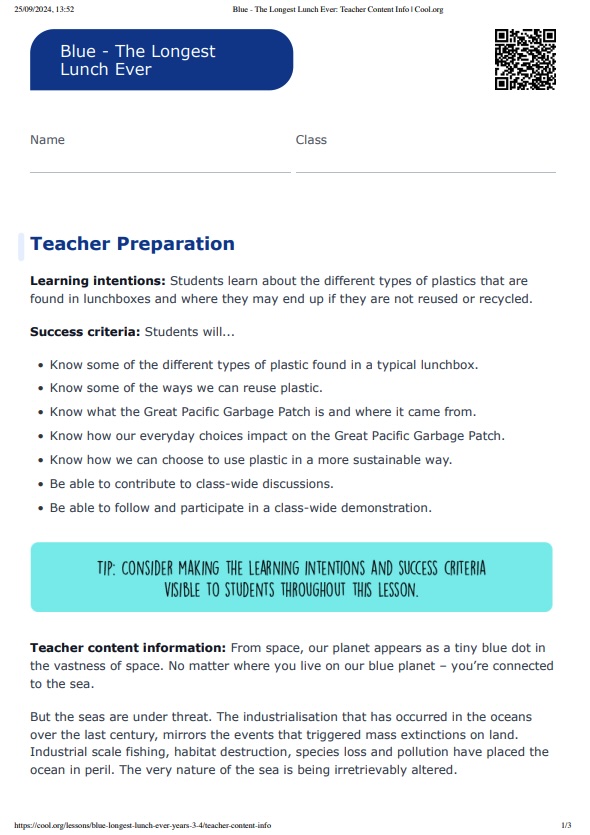Lesson summary
This lesson incorporates clips from Blue The Film as learning inspiration. Students investigate what types of plastics are found in a typical lunchbox. They explore how long these plastic items take to breakdown if they are not reused or recycled. Students are then asked to compare and contrast single use plastics to reusable plastic items. Finally, students take part in an eco-cooking demonstration by creating a Great Pacific Garbage Patch Soup, reflecting on the impact that plastics have on our oceans.
Learning intentions:
Students will...
- recognise the different types of plastics that are found in lunchboxes and where they may end up if they are not reused or recycled.
Success criteria:
Students can...
- identify what the Great Pacific Garbage Patch is and where it came from
- articulate how our everyday choices impact on the Great Pacific Garbage Patch
- articulate how we can choose to use plastic in a more sustainable way
Lesson guides and printables
Curriculum links
Select your curriculum from the options below.
Lesson details
Skills
This lesson is designed to build students’ competencies in the following skills:
- collaboration
- problem solving
Curriculum Mapping
Australian Curriculum content descriptions:
Year 3 Science:
- Science knowledge helps people to understand the effect of their actions (ACSHE051)
Year 4 Science:
- Science knowledge helps people to understand the effect of their actions (ACSHE062)
- Natural and processed materials have a range of physical properties that can influence their use (ACSSU074)
Syllabus outcomes: ST2-11LW, ST2-13MW
General capabilities: Critical and Creative Thinking
Cross-curriculum priority: Sustainability
Relevant parts of Year 3 Science achievement standards: Students describe how they can use science investigations to respond to questions.
Relevant parts of Year 4 Science achievement standards: Students apply the observable properties of materials to explain how objects and materials can be used. They identify when science is used to understand the effect of their actions.
Unit of work: Blue The Film: Inquiry – Years 3 & 4.
Level of teacher scaffolding: High – lead activities and discussions.
UN Sustainable Development Goals
- Target 14.1: By 2025, prevent and significantly reduce marine pollution of all kinds, in particular from land-based activities, including marine debris and nutrient pollution.
Resources Required
- Student Worksheet – one copy per student
- Device capable of presenting a website to the class
- Cut out small squares of recycled/scrap paper
- Pens/pencils
- Great Pacific Garbage Patch Soup – Instructions
You will also need:
- 10 – 12 different types of lunchbox items, including plastics wrappers (biscuit and chip packets), plastic cling wrap, straws, recyclable juice boxes, fruit (apple/banana) and a lunch box for the longest lunch demonstration. Put the objects into the lunchbox to represent a student lunchbox.
- Equipment needed for the eco cooking session: large bowl, wooden spoons, water, two pairs of scissors, plastic items, ladle and small bowls.
Additional Info
Blue is a feature documentary film charting the drastic decline in the health of our oceans. With more than half of all marine life lost and the expansion of the industrialisation of the seas, the film sets out the challenges we are facing and the opportunities for positive change. Blue changes the way we think about our liquid world and inspires the audience to action. Find out how to screen or download the film here. Along with the film is an ambitious global campaign to create advocacy and behaviour change through the #oceanguardian movement. To become an ocean guardian, see the website.
Related Professional Learning
How To Teach Sustainability With Hope
Quick summary: This course is for both primary and secondary teachers of all subjects, but especially for English, Science, Humanities and Geography teachers who are covering climate change and the cross-curriculum priority of sustainability.




Welcome back!
Don't have an account yet?
Log in with:
Create your free Cool.org account.
Many of our resources are free, with an option to upgrade to Cool+ for premium content.
Already have an account?
Sign up with:
By signing up you accept Cool.org's Terms and Conditions(Opens in new tab) and Privacy Policy(Opens in new tab).